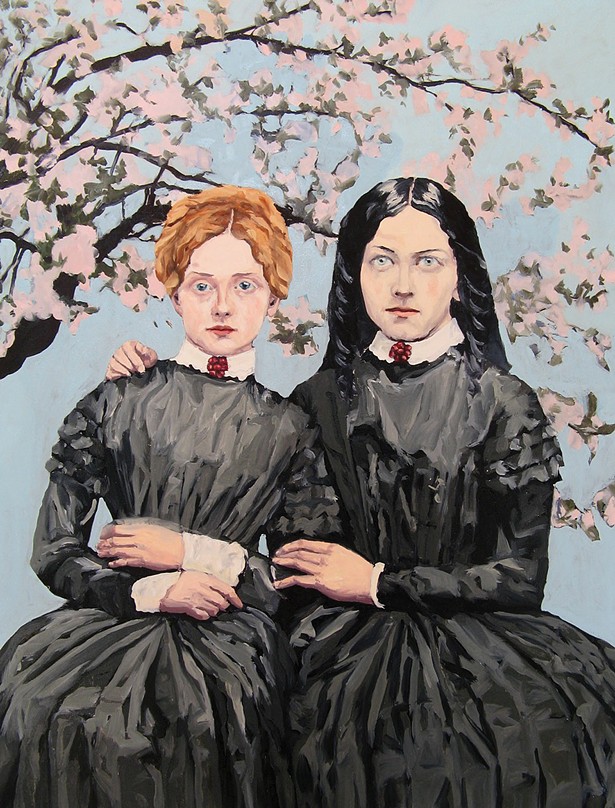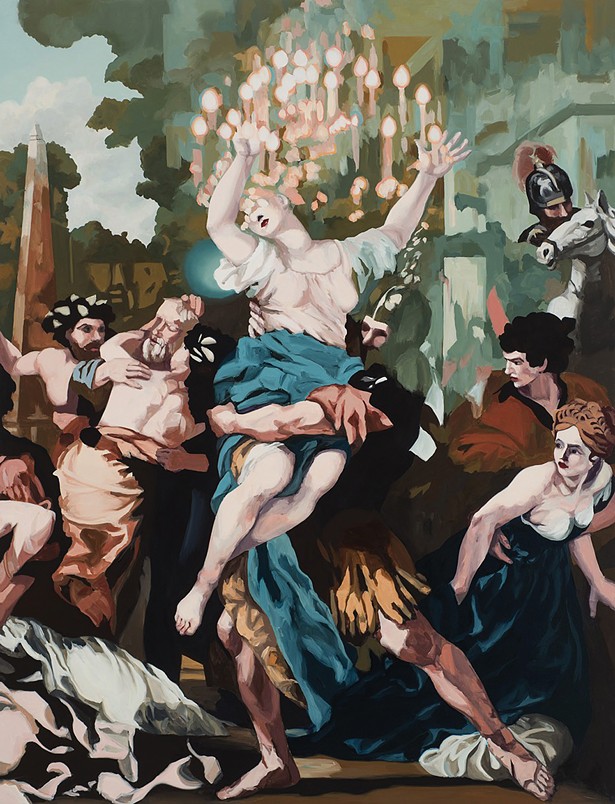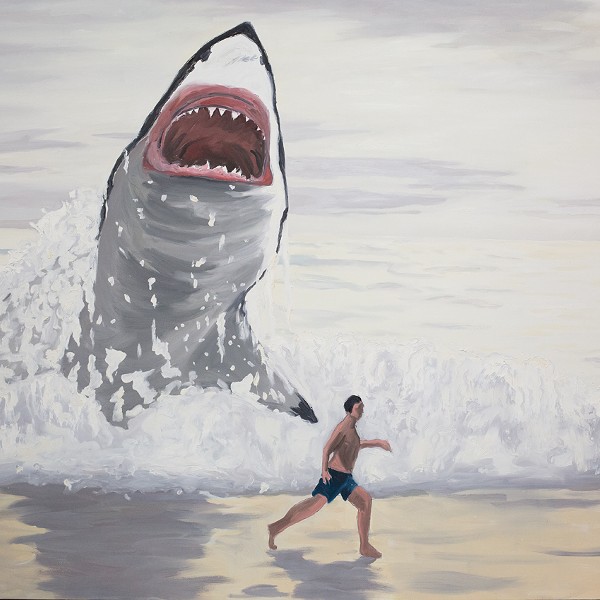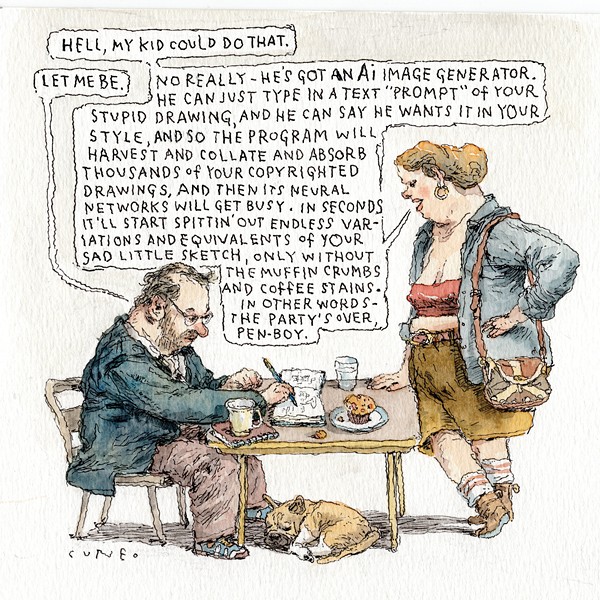Germantown-based painter Melora Kuhn draws inspiration from American history, fairy tales, and mythology. She takes specific images and alters them in an effort to examine patterns of thinking and ways of being with a style that is at once familiar and elusive to pin down.
Her painting Banished, which is part of the group show "Freaky Flowers" at September Gallery in Kinderhook through May 28, depicts two women whose Victorian black dresses stand in stark contrast to a vivid, floral background. The intensity of their gaze confronts the viewer, defying judgment. "Banished was made from a found black-and-white photograph a friend gave me from the 19th century. The image was compelling to me, raising more questions than answers. I made up my own story and titled it accordingly. The rest I leave to the viewer to discover for themselves," Kuhn says.
Kuhn's paintings are an open-ended investigation of the self in society. "I hope my work presents questions for exploration," she says. "For example, why would these ladies be banished? Would it be that their sexual preferences do not align with the church? Or do they have too much knowledge of the plants around them and what they can do?"
Kuhn's catalog showcases her knowledge of classical works. "After the Rape of the Sabine Women, Sebastiano Ricci" (2023) is a study of the late Venetian school and highlights her expert knowledge of texture and tone. After Derek Jarman (2023) is a portrait of a screaming woman whose Baroque dress stands in contrast to bold splotches of color that give the work a modernist quality. The heavy brushstrokes of other pieces recall Goya or even Van Gogh.
The Lion's Roar (2022) is a stark depiction of a lion in a desert landscape. Kuhn's use of negative space is provocative. She is as interested in what is left out as what's included. Solid forms seem to deteriorate, and what appears to be one thing can be something different entirely. The effect is captivating, surreal, and timeless.
At the heart of Kuhn's work is an interest in how images and stories from different cultures reveal how western convictions have shaped where we are now, as individuals and as a society. "I hope to understand thought structures that have rooted themselves within me, and with this recognition decolonize my mind and body," she says.
Employing a strict schedule, Kuhn works five days a week, six to eight hours a day, with weekends off. She plans three meals a day at roughly the same time and wears a uniform to avoid expending energy in deciding what outfit to choose. "I find the regularity of that routine gives me a good structure to work within," she says.


















